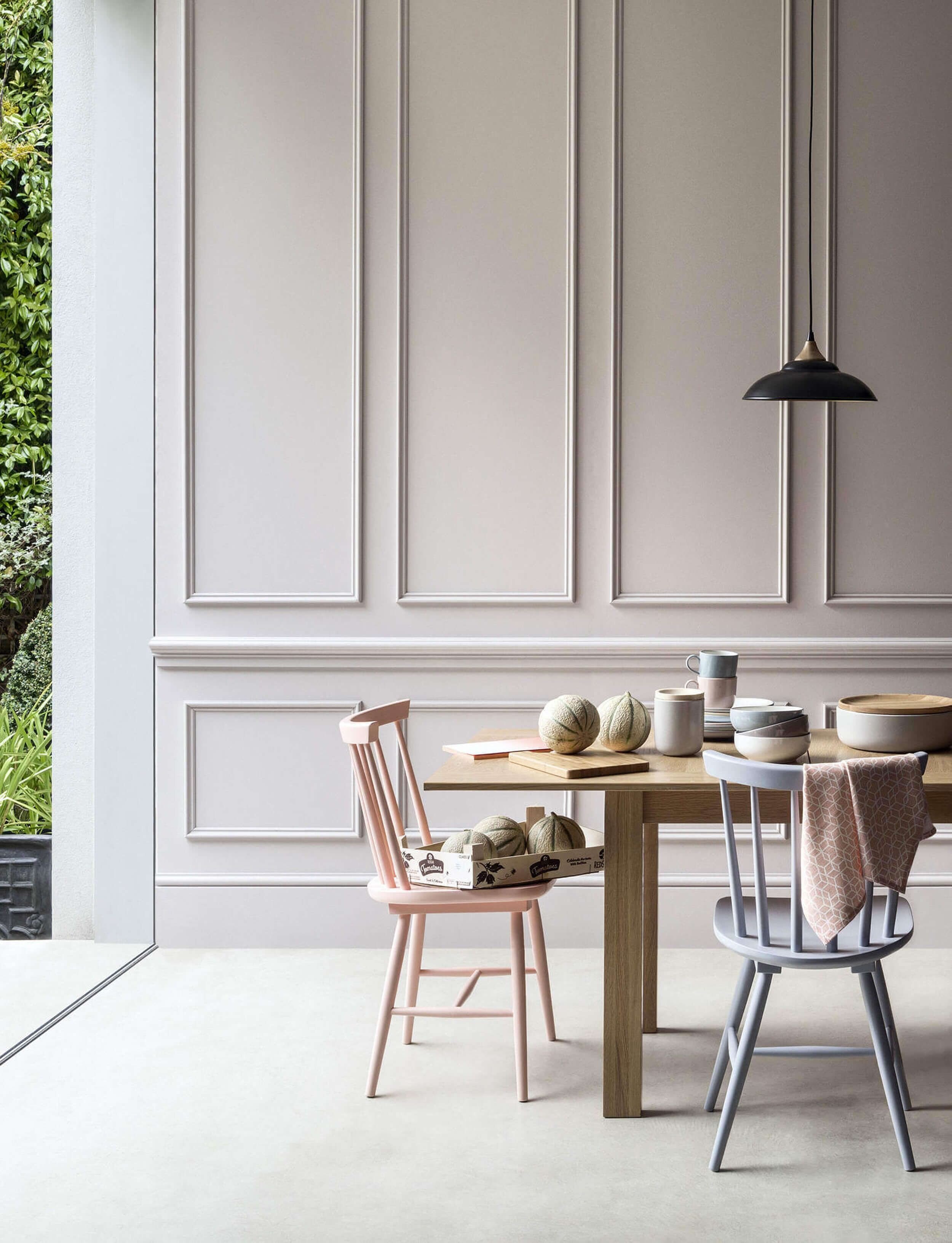Breaking the Mold
I was working with a client recently who absolutely wanted visual interest to her expansive walls, but equally absolutely did not want any color or pattern (wallpaper intrigued her but after many attempts she discovered it just was a bit too committal) my suggestion...wall molding.
What I classify as ‘wall molding’ are all the various applications of adding ‘molding’ to walls such as; board and batten, wainscoting, full paneling (tongue and groove, bead board, shiplap, etc.). I will break down what defines each and how to select the appropriate application for your home.
I was blessed to inherit ‘board and batten’ in two rooms of our Tudor revival home. The vestibule and ‘dining room’ (which is now our music room, but that is another story for another day) still possessed the original wall molding and I was obsessed. The visual interest and detail had me hooked and my over ambitious self set on a quest to recreate the same in our very first project when we moved in, our full bath.
At the time I didn’t realize why I was choosing this particular pattern I just knew I wanted it to look like it was original and I’m glad to say IT WORKED! I have fooled a number of visitors which has made me so so happy and leads me to my first ‘how do you decide the pattern’ rule of thumb.
Look around and see what you already have.
Depending on the age of your home, this is more true if you have a period home, you may already possess some beautiful wall molding in other areas. There are no rules that they need to all be the same, HOWEVER!, they do need to speak the same language. Take my example for instance, the dining room board and batten is much more ornate then what is occurring in the bathroom, but it carries the same theme which prevents it from appearing out of place.
Take you time to consider what your overall goal is.
If you don’t have any other molding to consider you not quite ‘free’ yet. Take you time to consider what your overall goal is. Are you looking for a dramatic feature wall? Subtle detail that can be carried throughout? A combination of both? The style, height, and color all play a role in executing this trend correctly, and understanding the available options will result in a much better final product.
terms to know
Wainscoting
To simplify this definition wainscoting simply means wall molding that is halfway (I use this term loosely because it can also refer to ¾ up the wall ⅝ up the wall etc.) up the way. The style you choose can vary however it is traditionally used in older homes to provide visual interest. Historically wood is exposed (check out my ‘dining room’ saga here) but in our modern world designers and homeowners are trying all types of colors and opening up a whole new world of possibilities.
Board and Batten
Board and Batten is a less ornate wall molding that can be found in interiors and exteriors, typically in more simplistic architecture. Think Craftsman, Colonial, Tudor, etc. Traditionally, it consists of a literal board and battens that form box shaped recesses. Historically, when executed it does not extend to the ceiling, however this trend is becoming more popular as home owners are executing a modern take of this technique.
Picture Molding
Like the name suggests this is molding in the shape of picture frames applied to the wall. This certainly has the ability to be the most delicate (you could certainly ‘beef it up’ depending on the proportions you choose) and could be carried throughout your home without it feeling too ‘heavy’. There has been a push to revive this particular type of molding in modern homes as a way to combat the ‘track home’ feel and I am all here for it!
Obsessed with this rich shade of red on this tongue and groove wainscoting
Wall Paneling
Wall paneling encompasses the most recent fetish of ‘shiplap’ as well as bead board and tongue and groove. But generally, it is paneling that covers the wall (and many times rooms) in its entirety. First and foremost ‘shiplap’ is similar to ‘tongue and groove’ that is applied underneath the finished wall. It was historically never intended to be seen (if it was exposed it was because of cost constraints, not style). If you're from the midwest its equivalent would be ‘lath’. The region of your older home often dictates much of the materials and applications used, shiplap is not native to the midwest. A much more ‘authentic’ paneling would be ‘bead board’ or a ‘tongue and groove’. Bead ‘boards’ are ‘panels’ of narrow planks historically, before the ‘panels’ were introduced each narrow planks were added one by one. ‘Tongue and Groove’ is wider, individual boards that fit together by a ‘tongue’ on one side of the board and a ‘groove’ on the other similar to how hardwood flooring is installed Painstaking but oh so beautiful.
I hope breaking down these terms and a brief history of where they were used in our homes has given you some ideas on creating some visual interest on the walls of your home. Do you have a favorite, or wall molding that you’ve inherited in your older home?

